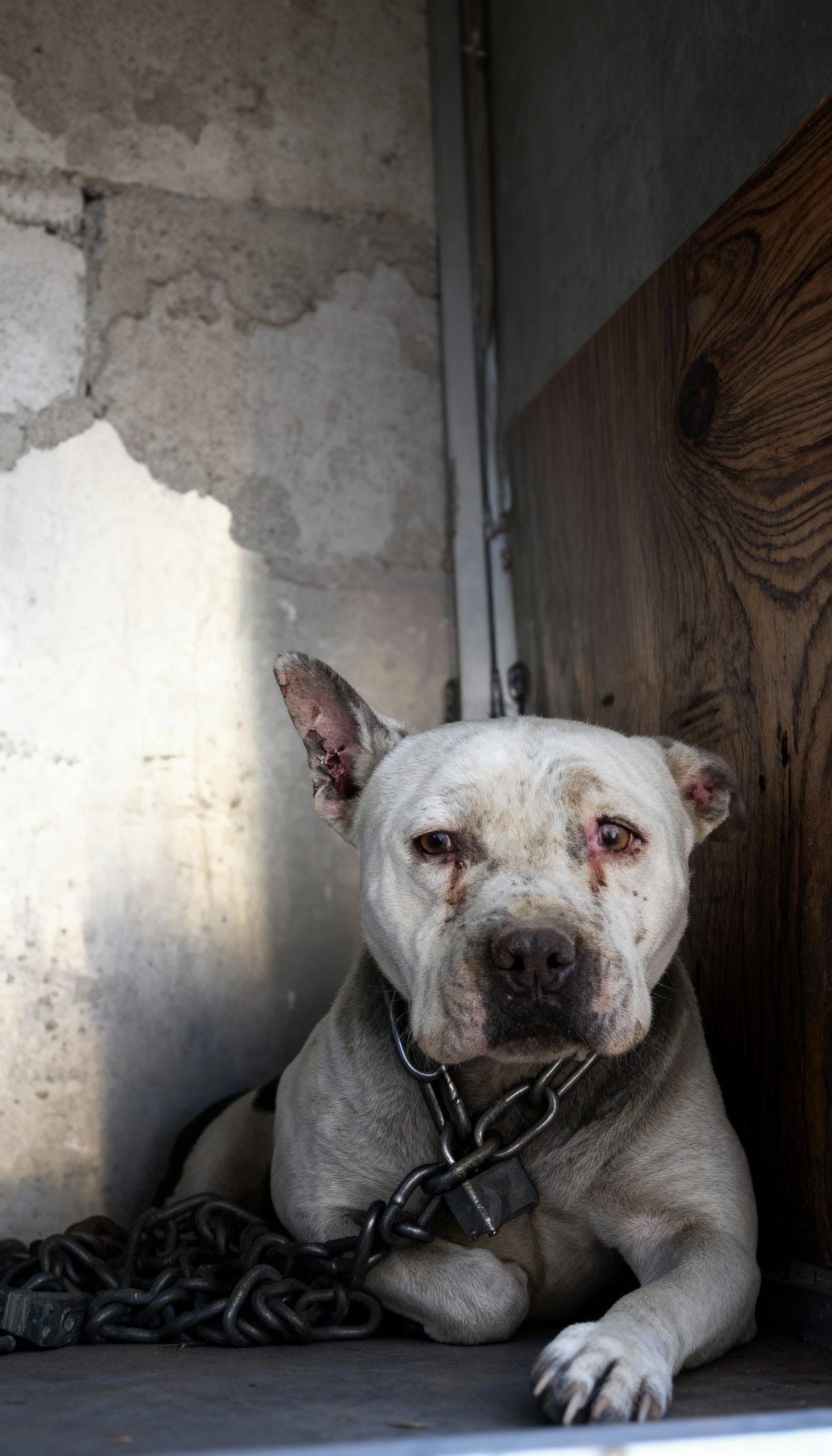The image of a chained dog, its eyes reflecting a profound weariness, serves as a stark and immediate reminder of a pervasive issue often hidden from public view: animal neglect. This particular canine, an American Staffordshire Terrier mix, lies tethered, not by a leash for a walk, but by heavy chains, its world confined to a small, uninviting space. The worn appearance, the visible scars around its eyes and ears, and the overall subdued posture speak volumes about a life devoid of proper care, companionship, and stimulation. This isn’t just a picture of a dog; it’s a silent plea, a snapshot of countless animals enduring similar fates across the globe. Their stories, though often unheard, are crucial for us to acknowledge, understand, and ultimately, to change. Animal neglect encompasses more than just physical abuse; it’s the absence of basic necessities such as adequate shelter, nutrition, veterinary care, and social interaction. It’s a spectrum of suffering that impacts an animal’s physical health, emotional well-being, and overall quality of life. By delving into the various facets of animal neglect, we can begin to comprehend the depths of this problem and identify ways to intervene, advocate, and foster a more compassionate world for these vulnerable creatures. This article aims to shed light on the realities of neglect, examining its causes, consequences, and the critical role each of us plays in recognizing and reporting such cases, moving towards a future where every animal is treated with the dignity and respect it deserves.

The Silent Sufferers: Decoding the Signs of Neglect
The subtle cues of animal neglect are often missed by the untrained eye, but they are undeniably present. A matted coat, overgrown nails, visible ribs, and chronic skin conditions are common physical indicators. Beyond the visible, behavioral changes such as extreme timidity, aggression, or a lack of responsiveness can also signal a history of neglect. A dog that shrinks away from human touch, or one that exhibits an uncharacteristic fear, may be demonstrating the psychological scars of isolation and inadequate socialization. The absence of clean water, sufficient food, or proper shelter—a simple, dry space away from the elements—constitutes a fundamental failing in care. In some cases, the signs are more overt, like open wounds, untreated infections, or severe infestations of fleas or ticks. The dog in the initial image, with its visible eye irritation and ear damage, presents a clear picture of an animal whose basic medical needs have been overlooked. Recognizing these signs is the first crucial step towards intervention. It requires a keen observational sense and a willingness to look beyond the surface, understanding that an animal’s inability to speak for itself places a greater responsibility on us to be their voice. It’s not about judgment, but about recognizing distress and taking appropriate action.

The Ripple Effect: Health and Behavioral Consequences
The long-term effects of neglect extend far beyond the immediate physical manifestations. Chronically malnourished animals often suffer from stunted growth, weakened immune systems, and organ damage. Untreated injuries and illnesses can lead to chronic pain, mobility issues, and a significantly reduced lifespan. Furthermore, the psychological impact is profound. Dogs, inherently social creatures, can develop severe anxiety, depression, and fear-based aggression when deprived of social interaction and positive human contact. The constant confinement and lack of mental stimulation can lead to obsessive-compulsive behaviors, such as pacing, tail chasing, or self-mutilation. The dog in the photograph, with its subdued demeanor, likely carries both physical and emotional scars. Its posture and expression suggest a profound sense of resignation, a common trait in animals that have endured prolonged periods of neglect and isolation. Reversing these effects often requires extensive veterinary care, specialized behavioral rehabilitation, and a patient, understanding environment. The cost, both financial and emotional, of rehabilitating a neglected animal underscores the importance of early intervention and preventative measures. It highlights the interconnectedness of an animal’s physical and mental health, demonstrating how one profoundly influences the other.







